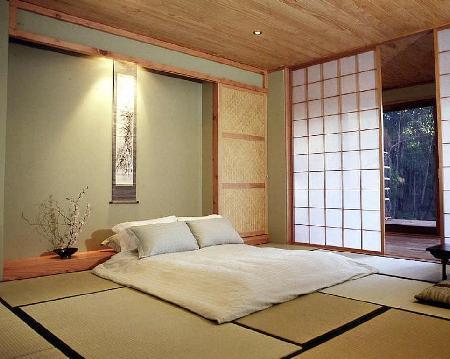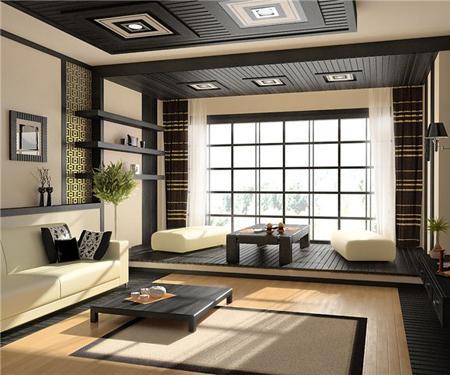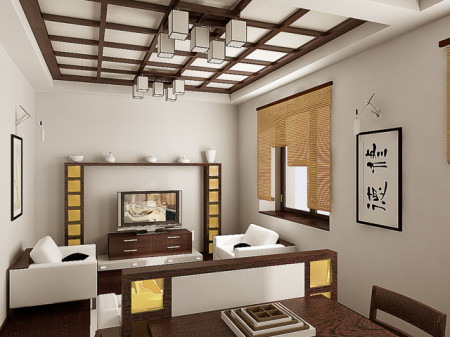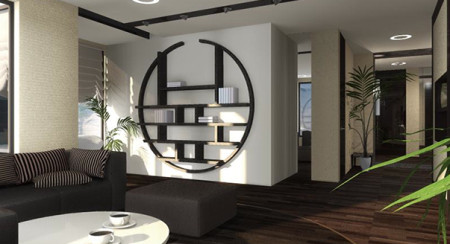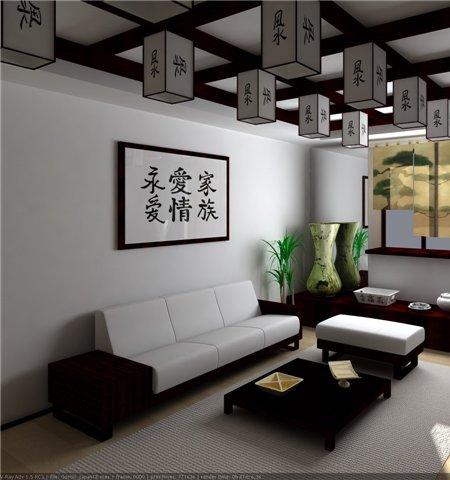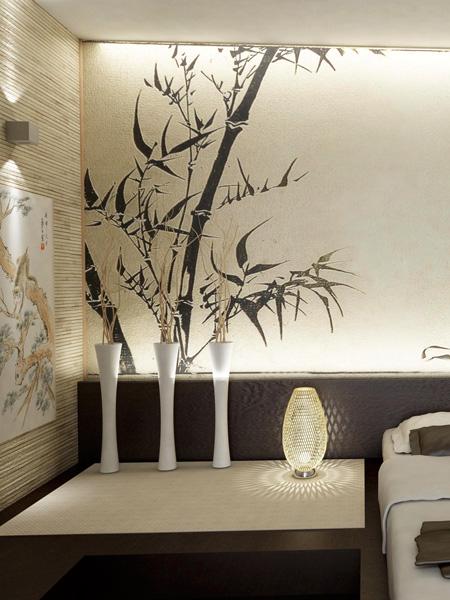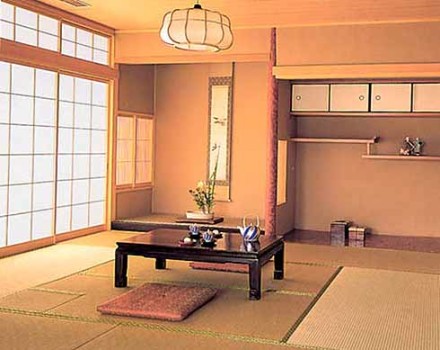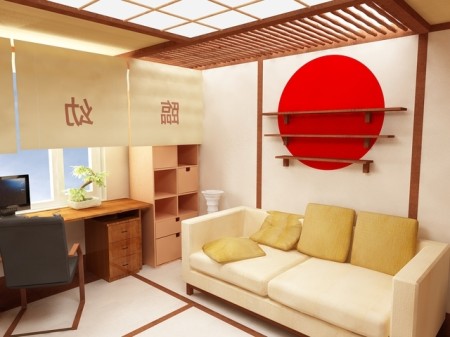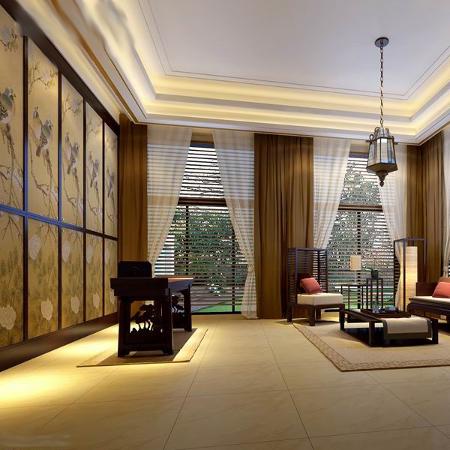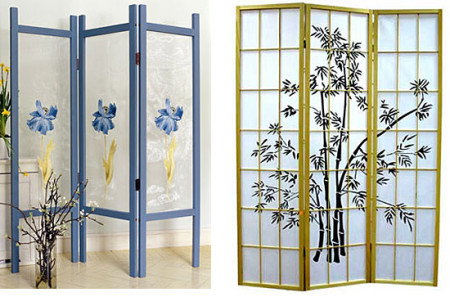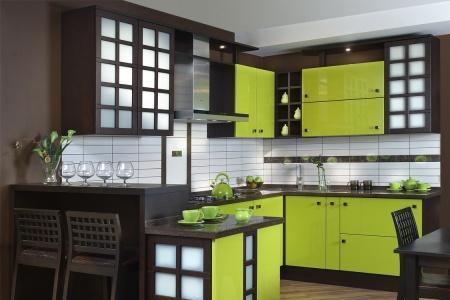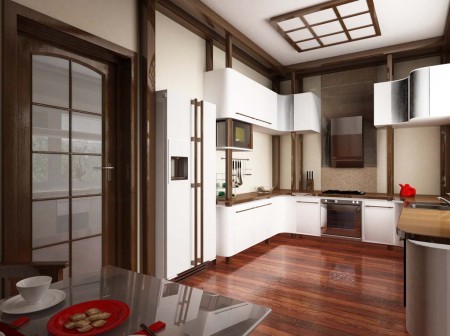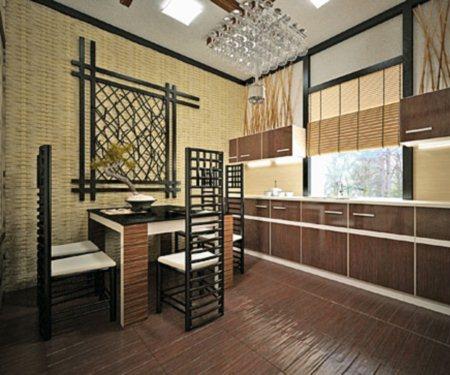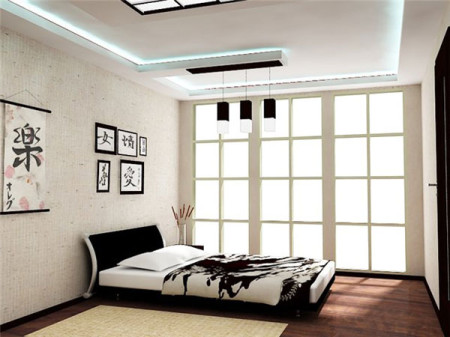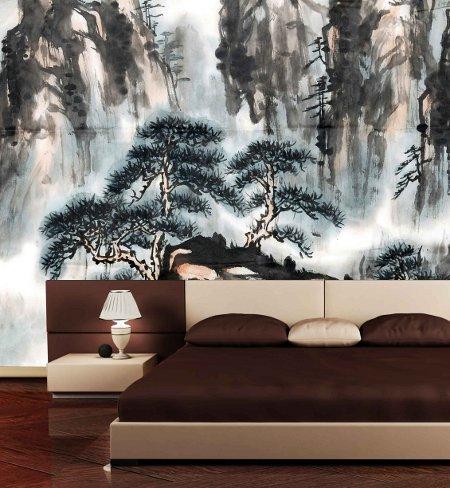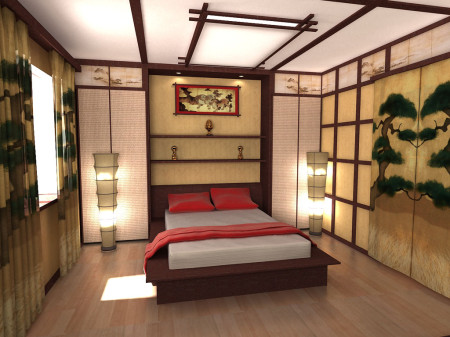In the modern interpretation of the Japanese style of the interior, some shift in accents is clearly visible - the relevance of the literal reproduction of all the details is lost, the presence of several expressive accessories is considered sufficient. It turns out that at the peak of fashion today is not the style itself, but its stylization.
Content
- 1 On the acceptability of the Japanese interior in its pure form
- 2 Japanese style room
- 3 Recommendations of designers - what should be avoided in the Japanese style, and on what - to stress
- 4 Japanese origami furniture
- 5 Advantages of Japanese design in the interior
- 6 Japanese screens
- 7 Japanese Style Kitchen
- 8 Bedroom in Japanese style
On the acceptability of the Japanese interior in its pure form
The reason for this phenomenon is very prosaic - a person accustomed to a comfortable western type of apartment design is difficult to reconcile with living in conditions of a peculiar Japanese minimalism. After all, the Japanese style in its purest form is the absence of usual armchairs, beds and sofas, it is necessary to sit on very low stools or on the floor, which is quite unusual.
In addition, the Japanese style in the interior does not imply the presence of anything personal:
- ornaments made by one's own hand,
- photo within,
- pictures, i. all that Europeans attach to individuality.
For all its attractiveness, the room in the Japanese style strikes with austerity and emasculation.
Japanese style room
Creating a Japanese design in the living room is not an easy task: you'll need to find a balance between objects that define style and familiar comfort. Naturally, it is better to give preference to traditional European furniture:
- sofas,
- armchairs,
- tables,
- chairs.
A special flavor will be characteristic of Japanese comedies, low coffee tables, nightstands, shelves in the form of hieroglyphs, rice paper lamps, scrolls with hieroglyphs, beautiful ancient weapons.
Another special accessory for the Japanese interior is a screen. Of course, in a normal room, it can look somewhat theatrical, but if a studio is made, the screens can be used very successfully to divide the territory into zones. An attractive moment in the interior will also be the original floral compositions made according to the Japanese canons - ikebana.
No less interesting element of the decor is a wallpaper in the Japanese style:
- imitating silk fabrics,
- made of natural raw materials,
- textile,
- or monophonic, with an undefined texture.
Often in the Japanese interior use niches, call them tokonoma, and they have a somewhat unusual purpose. The objects placed in them should cause sensations of two types:
- strict ordering, for example - placed in a certain order four pebbles,
- naturalness and naturalness, for example - an odd number of the same pebbles or a figure in the form of a circle with three strokes.
Recommendations of designers - what should be avoided in the Japanese style, and on what - to stress
Getting creative work should be aware that just fill the apartment with Japanese accessories - a little, a large number of them will probably give the apartment a resemblance to a store selling eastern products.
The following may become the guide to the correct action:
- Limit the color decision of the room with three colors - this is typical of the Japanese style.
- It is not recommended to back away from laconicism, furniture should be chosen rather in the style of minimalism than in the classical one.
- Do not let the clutter of the interior - the room should be saturated with air and light, there should be a lot of empty space.
- When choosing materials should be given preference to natural, it is better to give up leatherette, plastic, artificial tissues.
It should be noted that the atmosphere of the imperial palace and the hut of a simple Japanese peasant is characterized by extreme simplicity and elegant unity with nature, and a single philosophical concept is clearly visible in any Japanese interior. It includes a special refined concept of beauty, aesthetics of sabi-wabi, i.e. faith in the eternity of beauty, leaving a trace in time.
Japanese origami furniture
Japanese furniture is quite unusual for Europeans - it involves eating, resting and sleeping on the floor. This option is acceptable for the constitutional and physiological characteristics of the local population. Assess the advantages of sitting and sleighing on the stiff scabbards of tatami beds or the origami sofa, unless real connoisseurs of exotic sensations and adherents of eastern philosophical views can.
However, judging by the functionality, the sofa-transformer in this plan deserves special attention, depending on the assembly, it can be a sleeping place, can turn into tatami or serve as a rug for sitting.
Japanese furniture in general is a source of ideas for designers. In search of the optimal shape and in an effort to create furniture that occupies as little space as possible in tight urban flats, designers began to develop models of extremely comfortable closets, table-books, curb-cubes that easily turn into a table with two chairs - can one find more convenient option for a miniature kitchenette? The Japanese also have the idea of built-in furniture, compact tanzu shelves, located along the walls, different-level niches.
For the sake of justice, it should be noted that the influence of Japanese and European cultures can be called mutual, in large cities, furniture stores offer completely European pieces of furniture.
Advantages of Japanese design in the interior
Use the idea of Japanese style in the interior designers recommend in case of a clear lack of living space. Created in an even small room, a beautiful empty space will create the effect of its unlimitedness, will help the owner of a small apartment. Thoughtful balance of the Japanese vision of comfort and modern concepts of comfort will allow a fairly comfortable stay in small rooms.
At the same time used furniture can only have a visual similarity with the traditionally used in the Land of the Rising Sun. It is enough that it was not burdened with unnecessary details, had a regular rectangular geometry. The finishing touch in the creation of Japanese color can be Japanese decorative figurines, pupae, ikebana.
Japanese screens
One of the most striking elements of decor are Japanese screens. Although they do not have a special semantic load in the modern interior, they are like a visiting card of this style. They can look quite diverse and differ from each other:
- size and number of leaflets,
- pattern applied to the fabric,
- material of manufacture.
In most cases, in modern Japanese interior, they serve as a bright element of decor. The exception is the studio apartment, where the screen is used for its intended purpose and serves not only as an ornament, but as an adaptation for the division of space.
Japanese Style Kitchen
Since the Japanese style is very hard for minimalism, it can be used as nicely as possible in the design of a small kitchen - the room immediately becomes more spacious. Naturally, we are not talking about copying the situation of real cuisine in the apartment of the Japanese, but only about creating a special atmosphere and mood.
It is necessary to adhere to such principles:
- Maximum natural light.
- The functionality of each item that will be in the room.
- A minimum of extra items and perfect order.
- Presence of everything that is necessary for cooking, including modern kitchen appliances.
- The presence of sufficient space in the cabinets, which allows you to hide all kitchen utensils.
The Japanese generally hold the view that if you can not find a place to store a thing, then it is simply not needed in the house. In fact, the cluttering of the kitchen with different necessary and unnecessary utensils and knick-knacks visually makes its space even smaller.
Correctly located mirrors and lighting devices will also contribute to a visual increase in space. It is very important that, in the presence of high-quality natural light, each functional area has a backlight, preferably with a soft, soft light. Fixtures should be rectangular, made of natural wood and rice paper. In the studio apartment, you can use a screen to separate the kitchen area.
Kitchen furniture should also be special - of course, few people will risk installing a low table and use cushions for sitting, but the chosen furnishings should not be massive and dark. Most of all, modular furniture from natural wood of light color will approach. The Japanese prefer unpainted wood - it is difficult to find paints that could compete with the beauty of natural shades of wood. It should be remembered that in the Japanese interior, even in the kitchen it is not customary to use plastics and plastics. The use of sisal, jute, straw, bamboo, rice paper, clay and glass is welcome, textiles should be made of flax or natural silks.
The color scheme of the situation should be as natural as possible, preference should be given to beige, brown, milky shades, green or red can only be used as color accents. Bright colors are generally not recommended.
As an interior decor of the kitchen you can use expressive and laconic objects:
- scrolls with hieroglyphics,
- engravings,
- ikebana,
- traditional Japanese ceramics,
- living plants.
The main thing is that everything should be in moderation.
Bedroom in Japanese style
According to the philosophy of the Japanese, the free space in the house will facilitate the movement of good energies in it. Since in the bedroom a person spends almost a third of his life, it is necessary to exert maximum efforts to create a favorable energy situation in it. Sleep in a room with clean energy will have a healing effect on a person.
Although there should not be any excesses in the bedroom, but the Japanese welcome the presence in the room of such items as:
- ceramic vase with painting,
- a doll in a kimono,
- fans painted with cherry blossoms,
- folk japanese ornaments.
Since the Japanese tend to be closer to nature in everything and be in harmony with it, for all their practicality they still use flowers, both living and dried, for decorating the interior in the form of ikebans.
Materials that are used for finishing the bedroom must necessarily be natural:
- bamboo wallpaper,
- bricks or concrete,
- natural wood,
- glass.
A necessary condition is good natural lighting and soft artificial light, obtained by using paper lampshades. A calm state of mind will also be facilitated by the play of light and shadow.
As for color, the traditional option involves the use of one of the colors, black, white, cream or gray and their shades.



